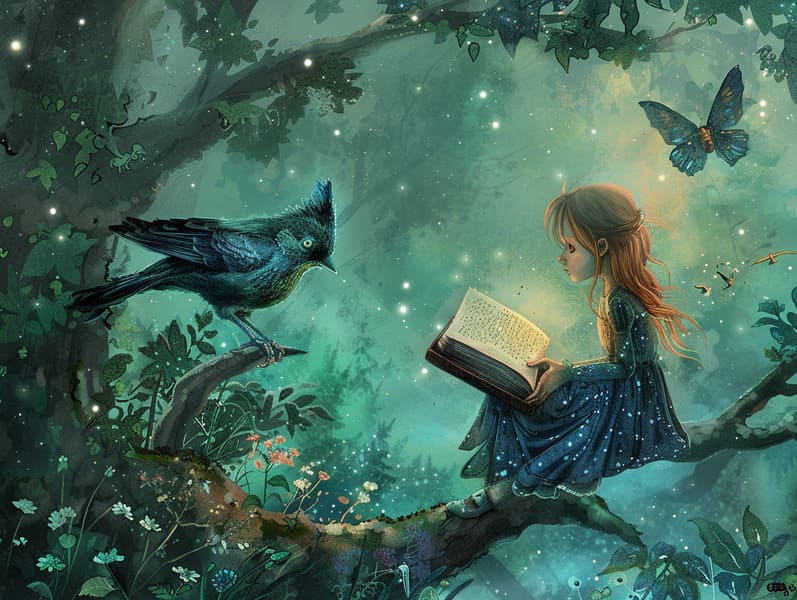Understanding the Legacy of Ancient Fairy Tales with Their Invariable Magic.
Understanding the Legacy of Ancient Fairy Tales with Their Invariable Magic.
Blog Article

Short fairy tales have old origins. These stories have been transmitted from one generation to the next millennia before they were ever recorded. They came from a variety of traditions, including African traditions. They were initially transmitted among mature audiences, often carrying themes and messages related to the societal norms and beliefs of the time.
The famous Grimm duo, Jacob and Wilhelm (the Grimm brothers), were among the first to collect and release many of these beloved fairy tales. Their collection, "Grimm's Fairy Tales," included stories like "The Little Glass Slipper," "Hansel and Gretel," and "Snow-White and Rose-Red," which have since become pillars in the world of traditional fairy tales. Similarly, H. C. Andersen's whimsical tales, such as "The Sea Maid," and "The Story of the Ugly Duckling," have captured hearts worldwide, establishing their place in the pantheon of classic fairy tales.
Even though they are old, traditional fairy tales remain as impactful as ever, especially as bedtime stories for kids. These fantastical tales are now available in different formats, including artistically illustrated books, charming animations, and digital fairy tales.
Their lasting presence can be traced to several charming aspects:
Ethical Lessons: Ancient fairy tales often teach important moral lessons. Fairy tales like "The Wolf and the Liar" teach the merit of truthfulness, while "The Story of the Tortoise and the Hare" emphasize the traits of determination and humility. These tales offer young ones clear distinctions between moral and immoral, building their moral compass in a gentle yet significant way.
Empathy and Awareness: Classic fairy tales frequently feature protagonists facing tests and troubles, provoking children to relate with their struggles and applaud their triumphs. For instance, "The Story of Beauty and the Beast" points out the importance of appreciating inner worth to comprehend the true nature of a person, encouraging empathy and discernment.
Cultural Understanding: Many timeless fairy tales are steeped in the cultural contexts from which they came. Reading these narratives can provide captivating looks into different historical contexts, encouraging a sense of world understanding and comprehension.
Imagination and Innovation: The extraordinary elements in classic fairy tales—supernatural elements—inspire children’s creative thoughts. These fairy tales carry readers to fantastical realms, promoting creative ideas and a sense of fascination that continues a lifetime.
Timeless fairy tales are not only charming but also didactic. They provide bewitching tools in enhancing various mental and emotional abilities in young readers. When classic fairy tales are voiced, they cultivate communication skills by showing new word meanings and complicated sentence structures. This practice also advances listening skills and attention, as kids listen intently, prepared to see what happens next.
Furthermore, debating the themes and characters of traditional fairy tales can nurture cognitive skills and critical thinking. The young are taught to spot patterns, make predictions, and know cause and effect. These reflections also advance young ones utter their thoughts and feelings, advancing their emotional intelligence.
In today’s modern era, the presence of internet fairy tales has made these narratives more attainable than ever. Web platforms and digital apps give large libraries of Grimm's fairy tales that can be experienced or listened through anytime, anywhere. Fairy tales read aloud are particularly sought after, offering an fun way for little ones to appreciate these bewitching tales. Voice books and read-out-loud stories carry characters and settings to life, often supported by entrancing soundtracks and soundtracks that elevate the story journey.
The everlasting appeal of classic fairy tales lies in their ability to shift to modern times while preserving their essential themes. Contemporary modernizations of these narratives often bring in more different characters and modern settings, making them familiar to today’s audience. However, the basic principles of braveness, understanding, and integrity remain unchanged, continuing to influence audiences of all ages.
Classic fairy tales also offer a sense of warmth and recognition. They afford a well-structured narrative with a transparent beginning, middle, and end, often closing with the termination of conflicts and the triumph of virtue over wickedness. This uniformity can be reassuring for kids, making known a sense of unwaveringness in an variable world.
Ancient fairy tales continue to fascinate and guide new generations, maintaining their mystique and impact in modern society. As children's bedtime stories, they bring a perfect blend of charm and enlightenment, advancing moral values, empathy, and creativity. The accessibility of online storybooks and the favor of fairy tales voiced affirm that these classic fairy tales remain acquirable to new generations.
By retaining and relating these fairy tales, we continue to laud the rich tapestry of fantasy and cultural heritage. Whether you are perusing a gorgeously illustrated book, browsing a electronic library, or hearing an read-aloud story, the appeal of Grimm's fairy tales is always within reach. These fairy tales convey of the unchanging impact of stories and its ability to hold these guys us together across eras and regions.
If you are experiencing a beautifully illustrated book, accessing a web-based collection, or listening through an read-aloud story, the attraction of famous fairy tales is always within reach.
These stories emphasize of the enduring force of fairy tales and its ability to join us across generations and cultures, establishing a link that captivates and teaches alike.